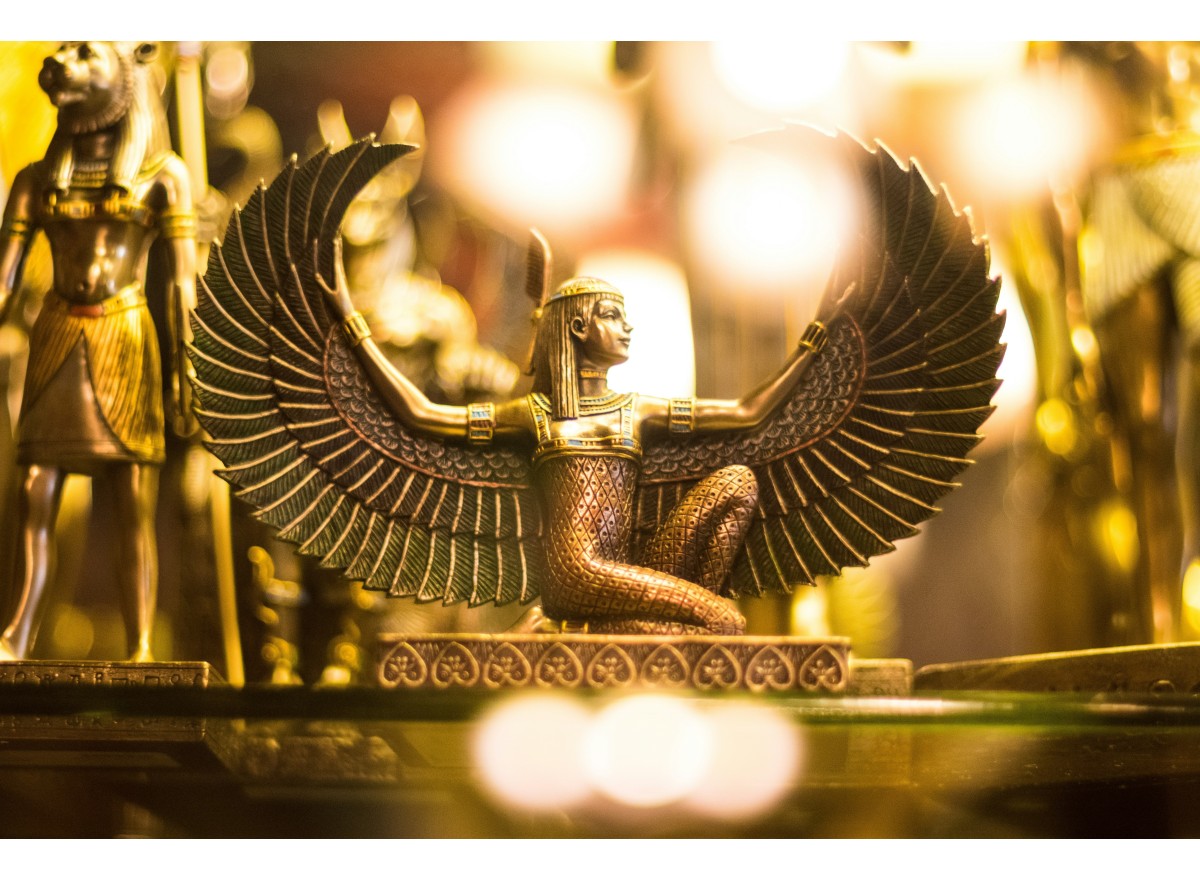Egyptian mythology

Egyptian mythology is rich with gods, goddesses, and stories that shaped daily life and religious practices in ancient Egypt. The ancient Egyptians believed in a wide range of gods who governed various aspects of life and nature. Here are some of the most famous deities and key mythological themes:
Egyptian mythology is rich with gods, goddesses, and stories that shaped daily life and religious practices in ancient Egypt. The ancient Egyptians believed in a wide range of gods who governed various aspects of life and nature. Here are some of the most famous deities and key mythological themes:
1. Ra (Re) - The Sun God
Ra was the most important deity in ancient Egypt, worshipped as the god of the sun. He was often depicted as a man with the head of a falcon, with a sun disk atop. Ra traveled daily across the sky in his solar barque, and at night, he journeyed through the underworld to bring about the dawn.
2. Osiris - God of the Afterlife
Osiris was the god of the afterlife and resurrection. He was depicted as a mummified man wearing a white crown, and he was considered the ruler of the underworld. Osiris was tricked and killed by his brother Seth, but his wife, Isis, rescued him. He became the lord of the afterlife and symbolized life after death.
3. Isis - Goddess of Magic and Life
Isis, the sister and wife of Osiris, was one of the most powerful goddesses in the Egyptian pantheon. She was the goddess of magic, healing, and protection. Isis was regarded as a nurturing mother and protector of the pharaohs. She is often shown with a throne on her head and holding an Ankh.
4. Horus - God of the Sky and Kingship
Horus, the son of Osiris and Isis, was worshipped as the god of the sky and kingship. He was typically depicted as a falcon or as a man with the head of a falcon. Horus fought against his uncle Seth, who had murdered Osiris, and emerged victorious, becoming the protector of the pharaoh.
5. Seth (Set) - God of Chaos and Destruction
Seth was the god of chaos, desert, storms, and destruction. He was the adversary of Osiris and Horus. Seth killed Osiris and tried to disrupt the balance of the world but was defeated by Horus. Seth is often depicted with an animal head that is not definitively identified (often referred to as the "Seth animal").
6. Anubis - God of Mummification and the Afterlife
Anubis was the god of mummification and the guardian of the dead. He was depicted as a man with the head of a jackal and played a central role in the judgment of the dead, overseeing the weighing of the heart and ensuring safe passage to the afterlife.
7. Thoth - God of Wisdom and Writing
Thoth was the god of wisdom, writing, magic, and science. He was depicted as an ibis or a man with the head of an ibis. Thoth was the scribe of the gods and played a key role in recording the deeds of the deceased in the afterlife.
8. Bastet - Goddess of Love, Music, and Fertility
Bastet was one of the most beloved goddesses in ancient Egypt and was often depicted as a cat or as a woman with a cat's head. She was the goddess of love, fertility, music, and joy, as well as a protector of women and children.
9. Ma'at - Goddess of Truth and Justice
Ma'at was the goddess of truth, justice, and cosmic order. She was often depicted as a woman with a feather on her head, symbolizing truth. The Egyptians believed that the world had to be maintained in a state of Ma'at to preserve balance and peace.
10. Amun - The Invisible God
Amun was a major deity in Egyptian mythology and was often worshipped as an invisible, all-powerful god. Later, Amun was merged with Ra to become "Amun-Ra," and during the New Kingdom, particularly in the 18th Dynasty, he became one of the most powerful gods in Egypt.
Key Mythological Themes:
-
Creation Myth: Various Egyptian creation myths exist, but one of the most well-known describes how the god Atum emerged from the primordial waters (Nun) and created himself. From him, the first gods were born, who went on to create the world and the universe.
-
The Afterlife and Life After Death: Egyptian mythology placed great emphasis on the afterlife. The belief in life after death was central to Egyptian society, and rituals such as mummification and the "weighing of the heart" in the afterlife played a significant role.
-
Horus and Seth: The battle between Horus and Seth is one of the most famous mythological tales. Horus fights for the throne after his father Osiris is murdered by Seth. This conflict symbolizes the eternal struggle between order (Horus) and chaos (Seth).
Egyptian mythology had a profound influence on the lives of ancient Egyptians, shaping their art, architecture, religion, and governance. The gods and their stories were deeply intertwined with the culture and worldview of ancient Egypt.

Comments
Leave your comment